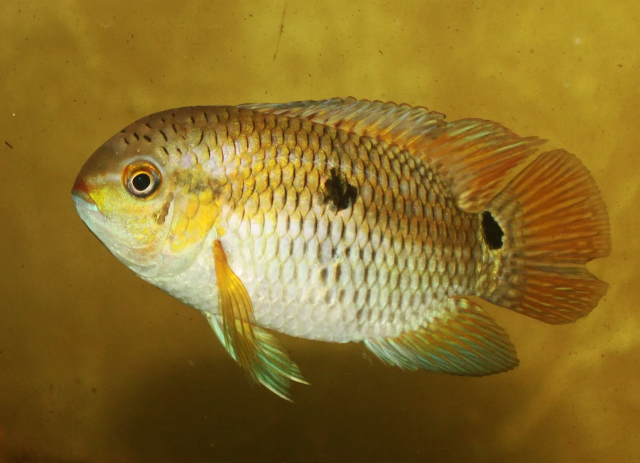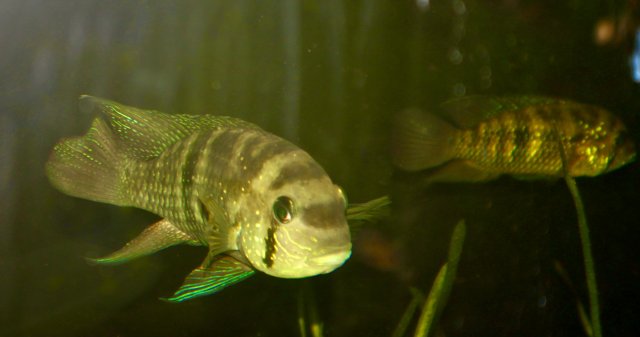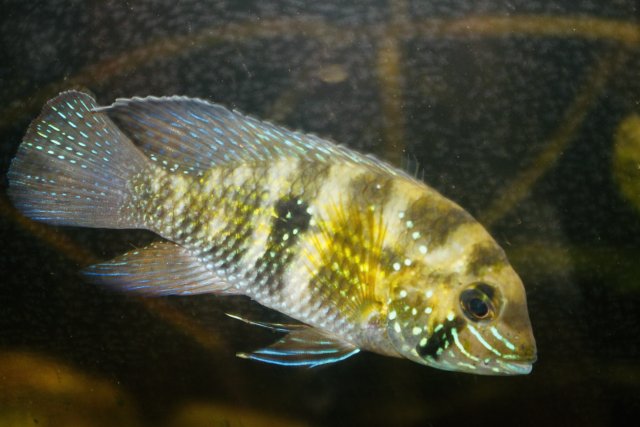I've had a large female Aequidens diadema for some time, and have struggled immensely in finding a male. I found a sub-adult at the lfs and vented it in the shop, and it appeared to be male, so i bought it... but now I'm not so sure. I've heard that the males have a steeper profile but slender build overall. As you can see below, the big girl is pretty stocky, and the smaller one is slimmer, though that might just be because it's a wild caught fish.... I tried getting some side pictures of the genital papilla on each fish, particularly the little one. Do you guys think i found another female, or does this fish look male?
Pics 1 and 2 are the 5" one, pic 3 is the big female, and pic 4 is both fish.
Apologies for the messy tank, just rescaped and fed them.
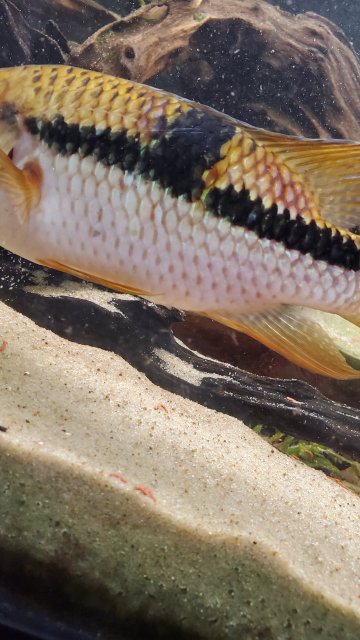
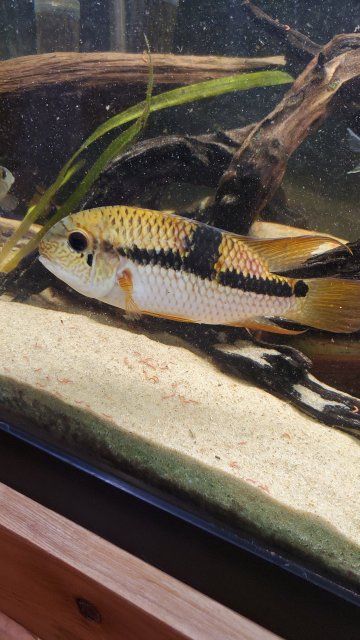
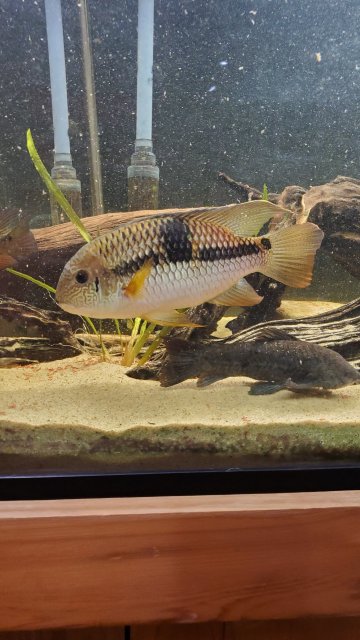
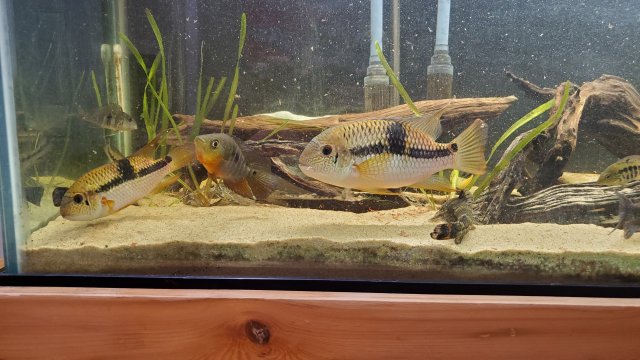
Pics 1 and 2 are the 5" one, pic 3 is the big female, and pic 4 is both fish.
Apologies for the messy tank, just rescaped and fed them.










